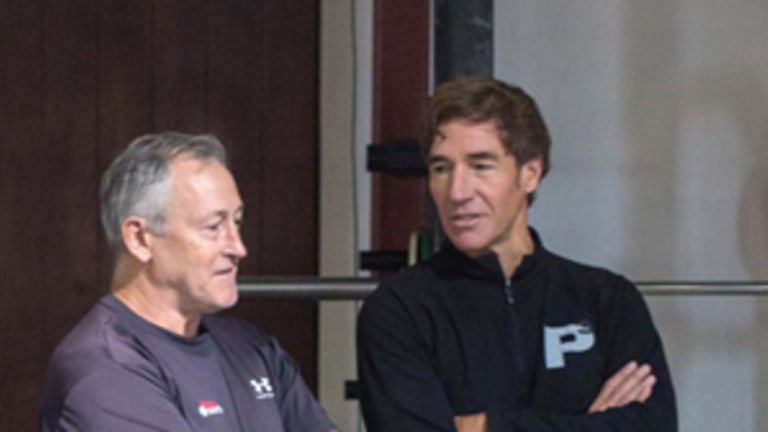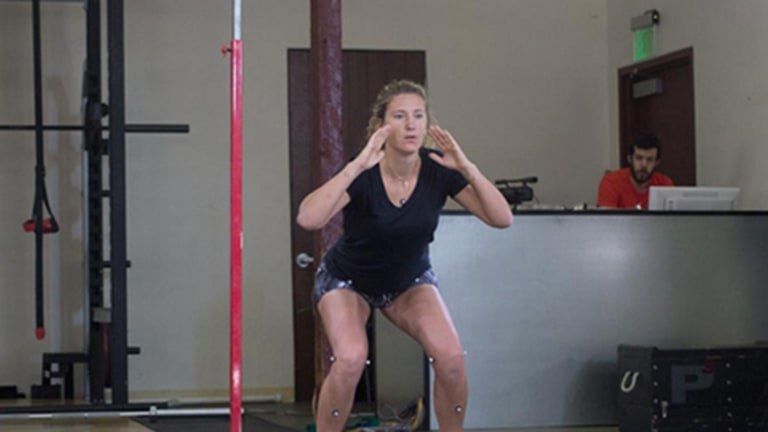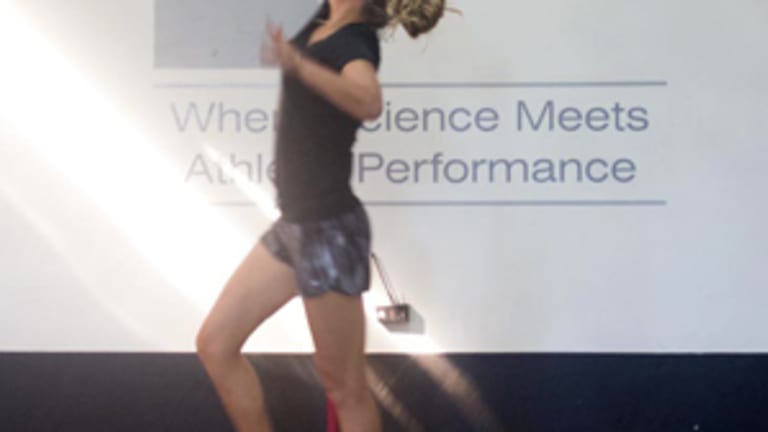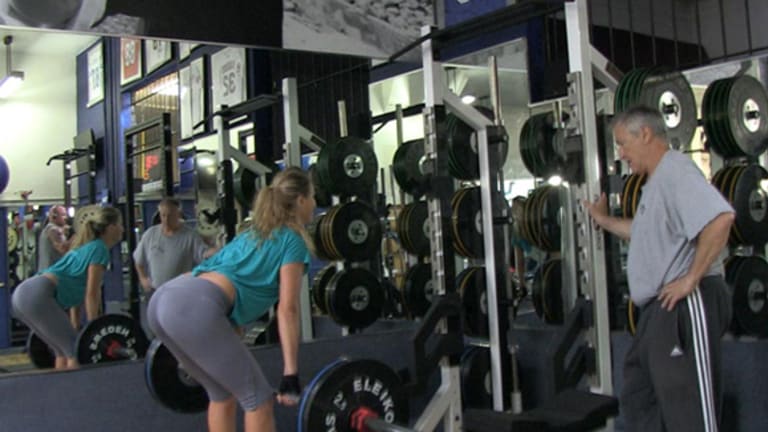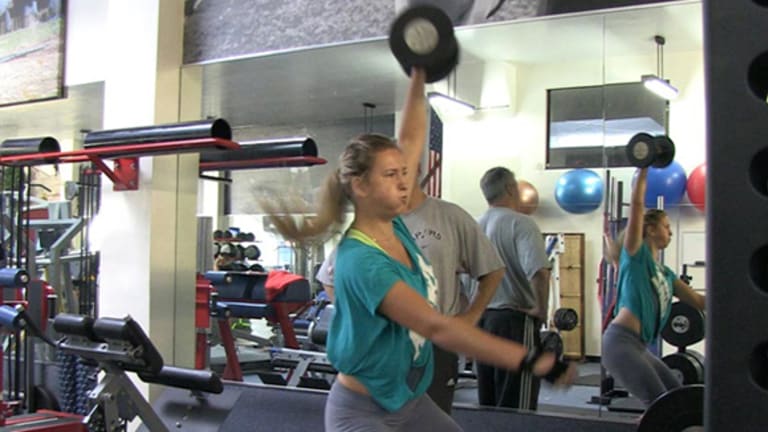The small reflective sensors, placed on every joint of Azarenka’s lower body, sternum and fourth vertebrae, shimmer as she readies for the tests. She begins her first test on the force plates with the one-off lateral skater. Set in an athletic position, like she’s waiting to return a tennis ball but with one foot on the force plate, she explodes hard to the right, and repeats. Her next test includes a reactive element, and then she moves on to the vertical jump.
Elliott observes Azarenka going through the tests and explains, “It’s all about getting more information, information that is also useful for our goals of improving performance and predicting injury. This leads to better decision making for the athlete.” He focuses back on Azarenka as she completes her last three tests: A squat jump (a test of lower-body strength), a drop box and jump (to test muscle elasticity), and a medicine ball rotation throw (to test upper body and core strength).
After Azarenka finishes, everyone circles around the computer to get a look at the data. In a single view, the high-speed video capture is integrated with the information from the force plates. Azarenka’s team is able to see how she’s applying force in her movements. In a vertical jump, they look to see if she is pushing off both legs equally, or if there is an imbalance. Elliott will crunch these numbers through his database to identify areas of concern. Gautier and Brungardt will analyze the information and integrate it into Azarenka’s training program back at her home gym, The Yard, in Hermosa Beach, Calif.
Azarenka first arrived at The Yard with two cups of special coffee in travel mugs. It’s no ordinary coffee; it’s Bulletproof coffee (which is traditionally made of butter, MCT oil and coffee). She always makes one for herself and one for Brungardt. When she hands it to him she says, “I bring it for him because he’s old and needs all the help he can get. This way he can kill me with a clear mind.”
For 17 years Brungardt was the strength and conditioning coach for the NBA's San Antonio Spurs. Gautier once worked with Spurs point guard Tony Parker, and he collaborated with Brungardt during this time. Now they’re back together again, working with another star European athlete. Brungardt, now 60, has been involved in sports for 45 years and has settled in as Azarenka’s traveling fitness coach.
